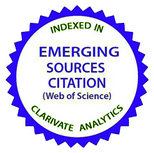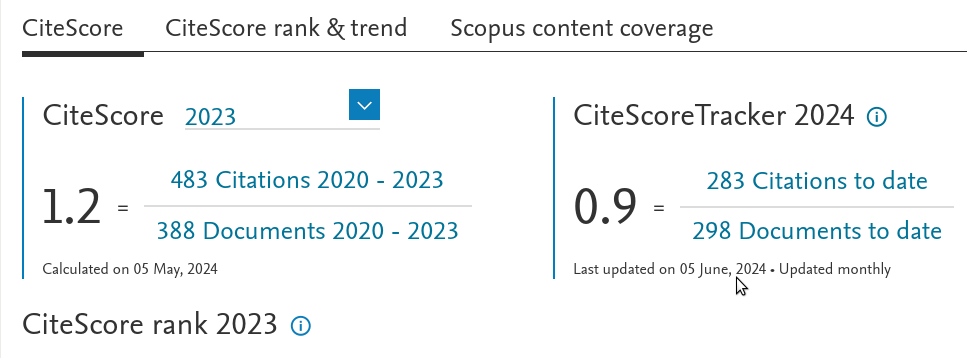Модель для dx2−y2 надпровiдностi в сильнокорельованiй фермiоннiй системi
DOI:
https://doi.org/10.15407/ujpe59.05.0487Ключові слова:
superconductivity, strongly correlated fermionic system, t − J model, mean-field approximationАнотація
Пропонується двовимiрна ефективна фермiоннa модель з притяганням до найближчих сусiдiв, що ґрунтується на вiдомiй феноменологiї ВТНП i iснуючих чисельних розрахунках у моделi t − J. Чисельнi розрахунки показують, що модель має dx2−y2 ) надпровiднiсть в основному станi при низьких фермiонних концентрацiях. Ми стверджуємо, що ця модель вiдображає важливу фiзику dx2−y2 надпровiдних кореляцiй, знайдених ранiше в t − J моделi в пiдходi точної дiагоналiзацiї. У рамках самоузгодженого наближення хаотичних фаз обчислено залежностi критичної температури вiд концентрацiї i константи зв’язку. Дослiджується також вплив домiшок на нашi результати i показано, що при облiку ефектiв запiзнювання зниження надпровiдностi незначне, на вiдмiну вiд наближення Хартрi–Фока.
Посилання
A.J. Leggett, in Modern Trends in the Theory of Condensed Matter, edited by A. Pekalski and R. Przystawa, (Springer, Berlin, 1980).
R.T. Scalettar et al., Phys. Rev. Lett. 62, 1407 (1989);
https://doi.org/10.1103/PhysRevLett.62.1407
A. Moreo and D. Scalapino, Phys. Rev. Lett. 66, 946 1991); M. Randeria, N. Trivedi, A. Moreo, and R.T. Scalettar, Phys. Rev. Lett. 69, 2001 (1992).
D.J. Scalapino, Phys. Rep. 250, 331 (1995).
https://doi.org/10.1016/0370-1573(94)00086-I
N.M. Plakida, High-Temperature Superconductivity: Experiment and Theory (Springer, Berlin, 1995).
https://doi.org/10.1007/978-3-642-78406-4
C.A.R. S’a de Melo, M. Randeria, and J.R. Engelbrecht, Phys. Rev. Lett. 71, 3202 (1993).
W. Li et al., arXiv:1203.2581 (2012); A. Kordyuk, Visnyk NAN Ukrainy, No. 9, 46 (2012).
A. Kordyuk, Visnyk NAN Ukrainy, No. 9, 46 (2012).
R. Micnas et al., Rev. Mod. Phys. 62, 113 (1990);
https://doi.org/10.1103/RevModPhys.62.113
E. Dagotto et al., Phys. Rev. B 49, 3548 (1994).
https://doi.org/10.1103/PhysRevB.49.3548
S. Haas et al., Phys. Rev. B 51, 5989 (1995).
https://doi.org/10.1103/PhysRevB.51.5989
A. Sboychakov et al., Phys. Rev. B 77, 224504 (2008).
https://doi.org/10.1103/PhysRevB.77.224504
E. Dagotto, Rev. Mod. Phys. 66, 763 (1994).
https://doi.org/10.1103/RevModPhys.66.763
R. Gonczarek, M. Krzyzosiak, and A. Gonczarek, Eur. Phys. J. B 61, 299 (2008).
https://doi.org/10.1140/epjb/e2008-00072-6
E.A. Pashitskii and V.I. Pentegov, Low Temp. Phys. 34, 113, (2008).
https://doi.org/10.1063/1.2834256
M.M. Korshunov et al., JETP 99, 559 (2004).
https://doi.org/10.1134/1.1809685
Strong numerical indications of -wave SC have been found before in the related models, in particular, in the − model (see, e.g., E. Dagotto and J. Riera, Phys. Rev. Lett. 70, 682 (1993);
Y. Ohta et al., Phys. Rev. Lett. 73, 324 (1994);
https://doi.org/10.1103/PhysRevLett.73.324
A. Nazarenko et al., Phys. Rev. B 54, R768 (1996)).
https://doi.org/10.1103/PhysRevB.54.R768
E. Dagotto, A. Nazarenko, and A. Moreo, Phys. Rev. Lett. 74, 728 (1994).
https://doi.org/10.1103/PhysRevLett.73.728
E. Dagotto, A. Nazarenko, and M. Boninsegni, Phys. Rev. Lett. 73, 310 (1995);
https://doi.org/10.1103/PhysRevLett.74.310
A. Nazarenko and E. Dagotto, Phys. Rev. B 54, 13158 (1996).
https://doi.org/10.1103/PhysRevB.54.13158
C. D¨urr et al., Phys. Rev. B 63, 014505 (2001).
https://doi.org/10.1103/PhysRevB.63.014505
D. Duffy et al., Phys. Rev. B 56, 5597 (1997).
https://doi.org/10.1103/PhysRevB.56.5597
P. Monthoux and D. Pines, Phys. Rev. Lett 69, 961 (1992).
https://doi.org/10.1103/PhysRevLett.69.961
D.Z. Liu, K. Levin, and J. Maly, Phys. Rev. B 51, 8680 (1995).
https://doi.org/10.1103/PhysRevB.51.8680
S. Ovchinnikov et al., Phys. Sol. State 53, 242 (2011).
https://doi.org/10.1134/S1063783411020235
P. Monthoux and D. Scalapino, Phys. Rev. Lett. 72, 1874 (1994).
https://doi.org/10.1103/PhysRevLett.72.1874
Our numerical calculations reveal that keeping only the one-loop diagram in the effective potential produces a spurious -wave condensate.
Yu.G. Pogorelov, M.C. Santos, V.M. Loktev, Low Temp. Phys., 37, 633 (2011);
https://doi.org/10.1063/1.3651472
Yu.G. Pogorelov, V.M. Loktev, Phys. Rev. B 69, 214508 (2004).
https://doi.org/10.1103/PhysRevB.69.214508
A.A. Abrikosov, L.P. Gorkov, and I.E. Dzyaloshinsky, Methods of Quantum Field Theory in Statistical Physics (Dover, New York, 1975).
For a uniform system, the tadpole diagram including the fermionic Green's function.
Downloads
Опубліковано
Як цитувати
Номер
Розділ
Ліцензія
Ліцензійний Договір
на використання Твору
м. Київ, Україна
Відповідальний автор та співавтори (надалі іменовані як Автор(и)) статті, яку він (вони) подають до Українського фізичного журналу, (надалі іменована як Твір) з одного боку та Інститут теоретичної фізики імені М.М. Боголюбова НАН України в особі директора (надалі – Видавець) з іншого боку уклали даний Договір про таке:
1. Предмет договору.
Автор(и) надає(ють) Видавцю безоплатно невиключні права на використання Твору (наукового, технічного або іншого характеру) на умовах, визначених цим Договором.
2. Способи використання Твору.
2.1. Автор(и) надає(ють) Видавцю право на використання Твору таким чином:
2.1.1. Використовувати Твір шляхом його видання в Українському фізичному журналі (далі – Видання) мовою оригіналу та в перекладі на англійську (погоджений Автором(ами) і Видавцем примірник Твору, прийнятого до друку, є невід’ємною частиною Ліцензійного договору).
2.1.2. Переробляти, адаптувати або іншим чином змінювати Твір за погодженням з Автором(ами).
2.1.3. Перекладати Твір у випадку, коли Твір викладений іншою мовою, ніж мова, якою передбачена публікація у Виданні.
2.2. Якщо Автор(и) виявить(лять) бажання використовувати Твір в інший спосіб, як то публікувати перекладену версію Твору (окрім випадку, зазначеного в п. 2.1.3 цього Договору); розміщувати повністю або частково в мережі Інтернет; публікувати Твір в інших, у тому числі іноземних, виданнях; включати Твір як складову частину інших збірників, антологій, енциклопедій тощо, то Автор(и) мають отримати на це письмовий дозвіл від Видавця.
3. Територія використання.
Автор(и) надає(ють) Видавцю право на використання Твору способами, зазначеними у п.п. 2.1.1–2.1.3 цього Договору, на території України, а також право на розповсюдження Твору як невід’ємної складової частини Видання на території України та інших країн шляхом передплати, продажу та безоплатної передачі третій стороні.
4. Строк, на який надаються права.
4.1. Договір є чинним з дати підписання та діє протягом усього часу функціонування Видання.
5. Застереження.
5.1. Автор(и) заявляє(ють), що:
– він/вона є автором (співавтором) Твору;
– авторські права на даний Твір не передані іншій стороні;
– даний Твір не був раніше опублікований і не буде опублікований у будь-якому іншому виданні до публікації його Видавцем (див. також п. 2.2);
– Автор(и) не порушив(ли) права інтелектуальної власності інших осіб. Якщо у Творі наведені матеріали інших осіб за виключенням випадків цитування в обсязі, виправданому науковим, інформаційним або критичним характером Твору, використання таких матеріалів здійснене Автором(ами) з дотриманням норм міжнародного законодавства і законодавства України.
6. Реквізити і підписи сторін.
Видавець: Інститут теоретичної фізики імені М.М. Боголюбова НАН України.
Адреса: м. Київ, вул. Метрологічна 14-б.
Автор: Електронний підпис від імені та за погодження всіх співавторів.

















